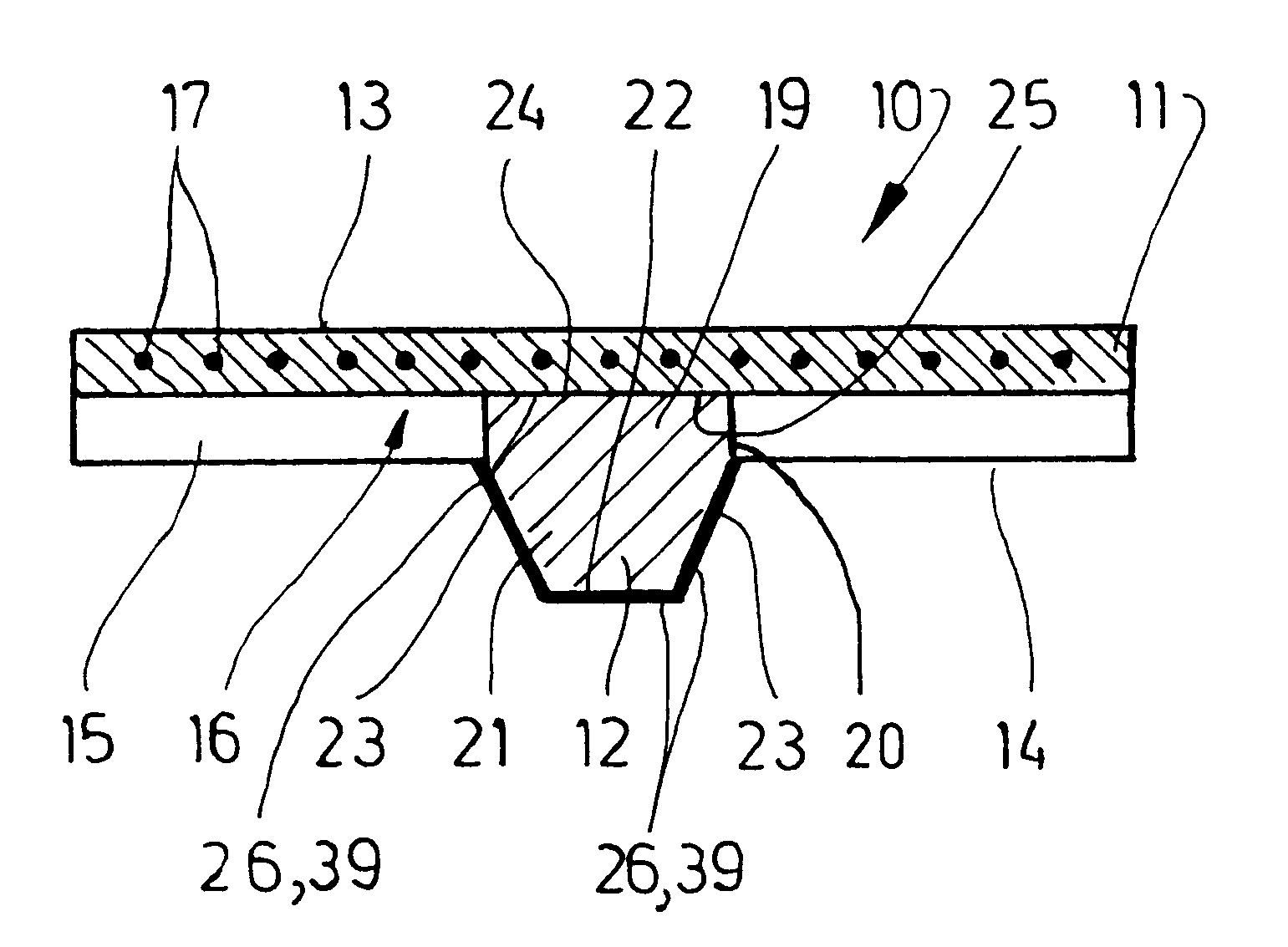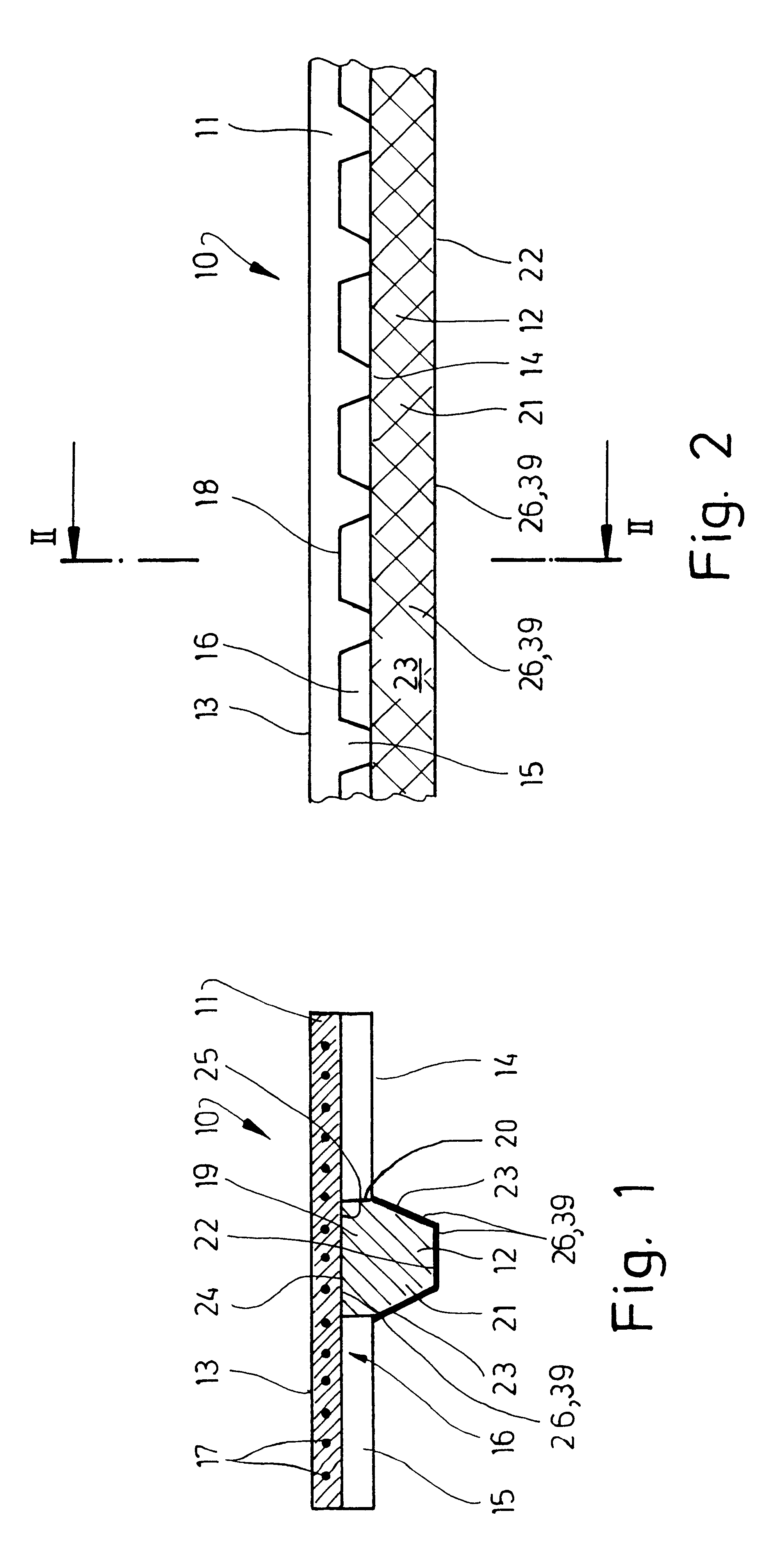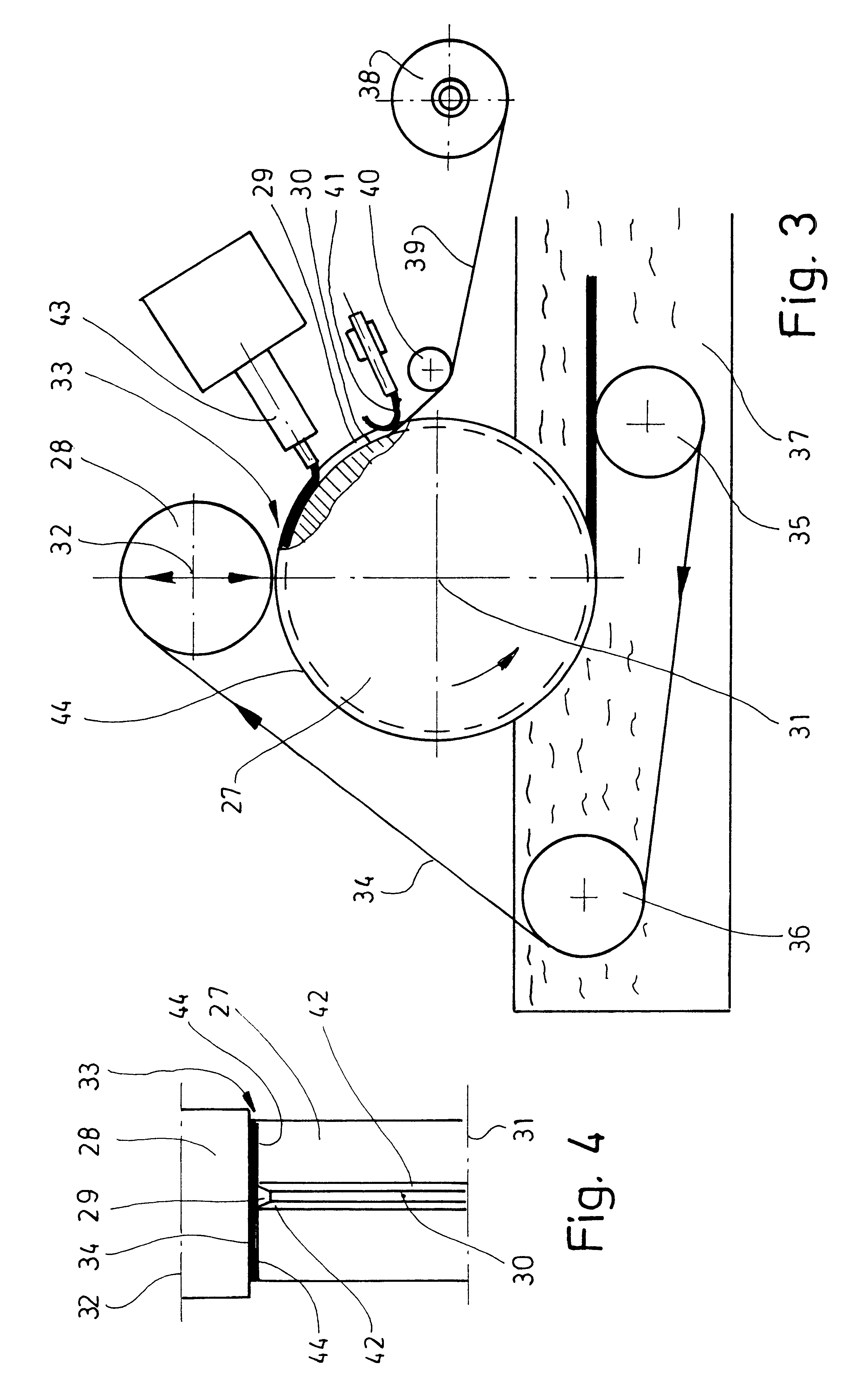Belt, especially conveyer belt and method for manufacturing same
a conveyer belt and belt technology, applied in the field of conveyer belts, can solve the problems of disturbance noise and particularly negligible additional effort, and achieve the effect of reducing the noise level
- Summary
- Abstract
- Description
- Claims
- Application Information
AI Technical Summary
Benefits of technology
Problems solved by technology
Method used
Image
Examples
Embodiment Construction
The above figures, in particular FIGS. 1 and 2, show a belt which is more precisely a conveyer belt 10. The conveyer belt 10 shown here comprises a traction means 11 and a guide means 12. The traction means 11 serves mainly to transmit the driving forces of the conveyer belt 10. Objects to be transported can lie directly on a smoother top side 13 of the traction means 11. But generally the conveyer belt 10 is arranged below separate carrying means for receiving the objects to be transported. This may be arranged such that the conveyer belt 10 is frictionally-engaged to the underside of the preferably plate-shaped carrying means, which are not shown in the figures, lying against it with the top side 13 of the traction means 11, or is connected in a force-locking manner to the carrying means for transporting the objects, for example by means of screws or rivets.
The traction means 11 has a toothed-belt profile on its underside 14. In the shown exemplary example, the profile results fro...
PUM
| Property | Measurement | Unit |
|---|---|---|
| friction | aaaaa | aaaaa |
| coefficient of friction | aaaaa | aaaaa |
| shape | aaaaa | aaaaa |
Abstract
Description
Claims
Application Information
 Login to View More
Login to View More - R&D
- Intellectual Property
- Life Sciences
- Materials
- Tech Scout
- Unparalleled Data Quality
- Higher Quality Content
- 60% Fewer Hallucinations
Browse by: Latest US Patents, China's latest patents, Technical Efficacy Thesaurus, Application Domain, Technology Topic, Popular Technical Reports.
© 2025 PatSnap. All rights reserved.Legal|Privacy policy|Modern Slavery Act Transparency Statement|Sitemap|About US| Contact US: help@patsnap.com



